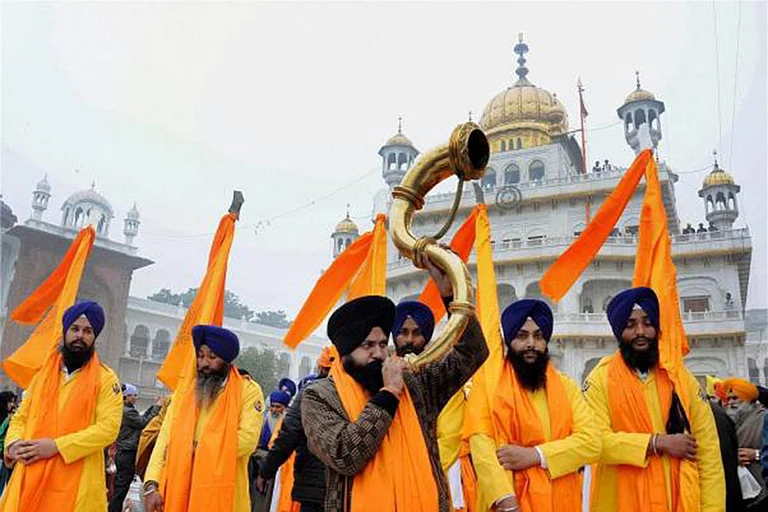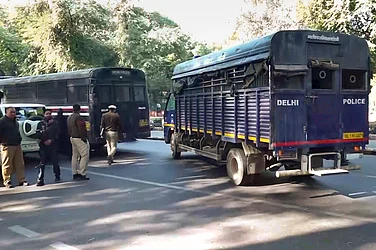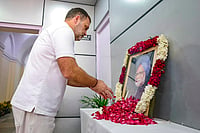Weeks after retaining four states in the just-concluded assembly elections, the Bharatiya Janata Party rolled its action plan for Himachal Pradesh which goes to the polls barely nine months from now along with Prime Minister Narendra Modi’s home state Gujarat.
The nomination of a Dalit for the lone Rajya Sabha seat from the hill state is being seen as a move to woo the state’s 25.22 per cent scheduled caste population.
Dr Sikander Kumar, 54 —who resigned as vice chancellor of Himachal Pradesh University just a few days ago—was elected unopposed to the Upper House of Parliament on March 24. The seat will fall vacant early next month after the retirement of former Union minister and Congress deputy leader Anand Sharma.
The Opposition Congress did not field a candidate against Dr Kumar, giving the BJP an easy drive.
While the Congress remains its main rival in Himachal Pradesh—the two parties have alternately held power in the state, the BJP is wary of the rising influence of the Aam Aadmi Party (AAP).
The rise of AAP to power in Punjab, a state sharing borders with Himachal Pradesh, has woken up the BJP to a new potential political challenger.
Though Himachal Pradesh has never voted on caste lines, the large number of lower caste voters might have forced the BJP to recalibrate its strategy that would also help shed its image of a ‘Brahmin-Bania’ party.
“That’s why there is a departure from the normal practice of political parties, both BJP and Congress, to name its Rajya Sabha candidates from among influential political leaders. The BJP has the forthcoming assembly polls in the mind to fortify its presence among Dalits,” says Mukesh Kumar, a Dalit scholar.
Besides the 25 per cent SC voters, the state also has 5.71 per cent scheduled tribe voters and 13.52 per cent from other backward classes (OBC). For the record, upper castes form a healthy 50.72 per cent of the population.
Dr R S Chauhan, a retired professor of political science and former pro-vice chancellor of HPU, says, “I see two strong factors in Kumar’s elevation to Rajya Sabha by the BJP. First his Dalit background, which is BJP’s agenda to overreach its Hindutva appeal in the hill state, and secondly, his being an academician, especially a professor of economics, mainly agriculture economics. The BJP will certainly hard-sell both the factors, not alone in the elections but also beyond.”
Hailing from a remote village of Hamirpur, also the home district of Union minister Anurag Thakur, Dr Kumar’s rise on the political horizon of the ruling BJP is, however, not incidental.
Many believe that his close association with President Ram Nath Kovind also helped him get the RS nomination. Dr Kumar had once headed the Himachal chapter of BJP’s SC Morcha when Kovind was its national chief.
He is second Dalit in the state’s 50-year history to be nominated for Rajya Sabha after the Congress had given representation to Roshan Lal who got three successive terms in 1970, 1976 and 1982.
Before Dr Kumar, nominations to the Rajya Sabha from the state have invariably been from upper castes like Rajputs and Brahmins, both by the Congress and BJP. Some of the key names in the BJP’s list include former chief minister Shanta Kumar, J P Nadda (BJP national president), Anil Sharma, a former Himachal minister and son of former communication minister Sukh Ram and Suresh Bhardwaj (now a cabinet minister).
Those from the Congress include Anand Sharma, Viplove Thakur, Chandresh Kumari, Chandan Sharma, late Satyavati Gang (whose husband Dr Y.S. Parmar was the state’s first chief minister) and late Gian Chand Tutu.
The BJP’s state vice president Ganesh Dutt claims that before the 2017 assembly elections, Dr Kumar played a significant role in expanding the party’s base among SCs. A series of sammelans organised by the party ahead of the polls had helped in getting massive support of the Dalits and in eventually bringing the BJP to power—the first time on its own strength and with the highest number of seats.
Dutt says, “Since we already have a Dalit, Suresh Kashyap, as state party president, who is also a sitting MP from Shimla, Dr Sikander Kumar could be tipped to play a large umbrella role, not only among the Dalits but also the intellectual community, academicians, college-university teachers’ cell during the next assembly polls. The party is already in the process of drafting his role during the upcoming maha-sampark abhiyan in all 68 constituencies.”
Insiders also do not rule out him replacing Kashyap in due course ahead of the 2024 Lok Sabha polls.
Belonging to a poor family, which also faced the scourge of untouchability and deprivation, Dr Kumar recalls once being hit by an upper caste man for unknowingly drinking water from a pond meant only for higher castes.
“It was a hot summer day and I was returning from my school through a lonely, forested track, maybe 5-6 kilometres from my village. I was very thirsty and went down to quench my thirst. I had hardly taken one or two gulps when a man came out of nowhere and slapped me hard,” Dr Kumar recalls.
When he came to Shimla for his post-graduation studies, he had no money to afford a rented room.
“I lived in the basement of Panchayat Bhawan, a community dormitory. I slept on the floor and lived on bread loaves for two years in the state’s capital to pursue my master’s degree in Economics at Himachal Pradesh University. For clothing, I had just one shirt and a pair of pants for two years,” he had told Outlook last year.
He has written three books and has guided 17 PhD and 52 M Phil students.
As VC, he made nearly 200 recruitments of teachers in the university, introduced reforms in the examination system and improved campus infrastructure. He also had his share of controversies relating to his appointment as vice chancellor, which was later upheld by the high court, and alleged saffronisation of the campus, favouritism and backdoor recruitment of RSS-backed people.


























